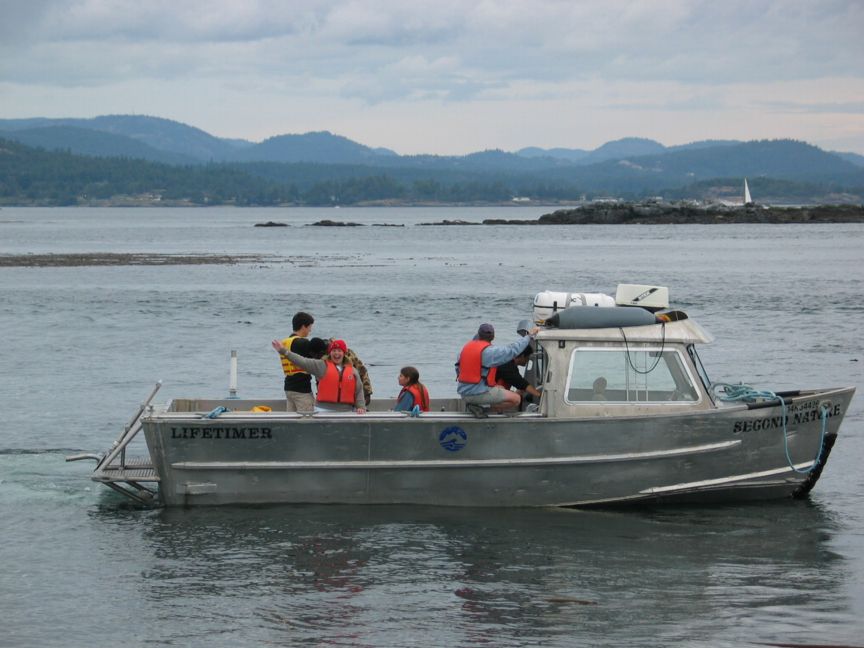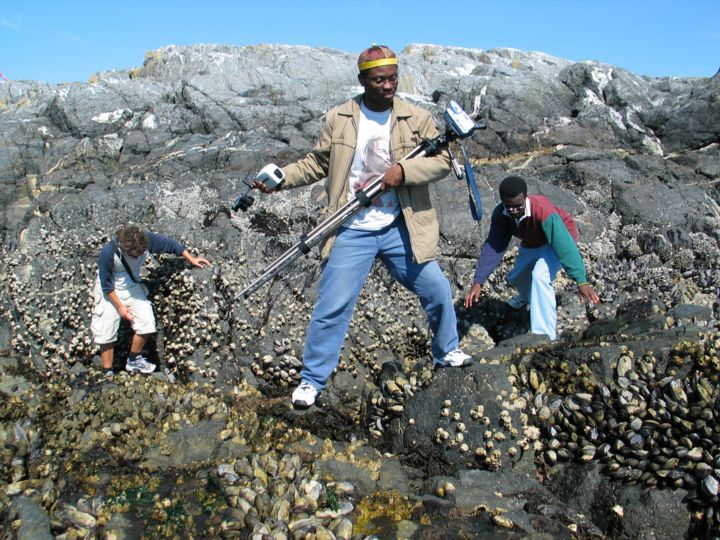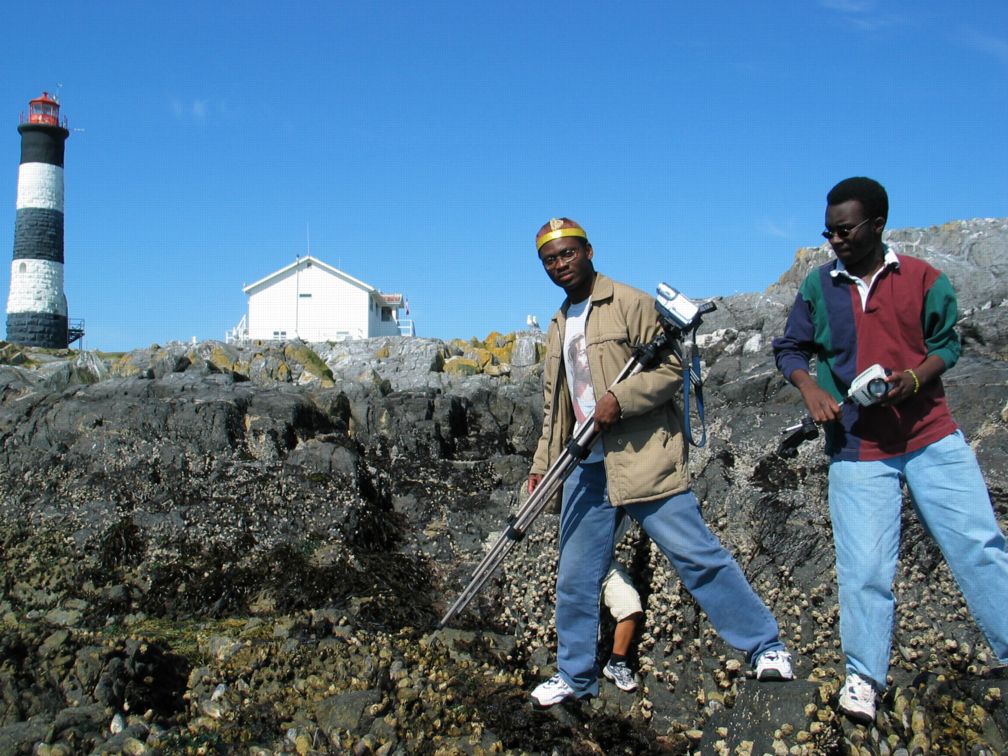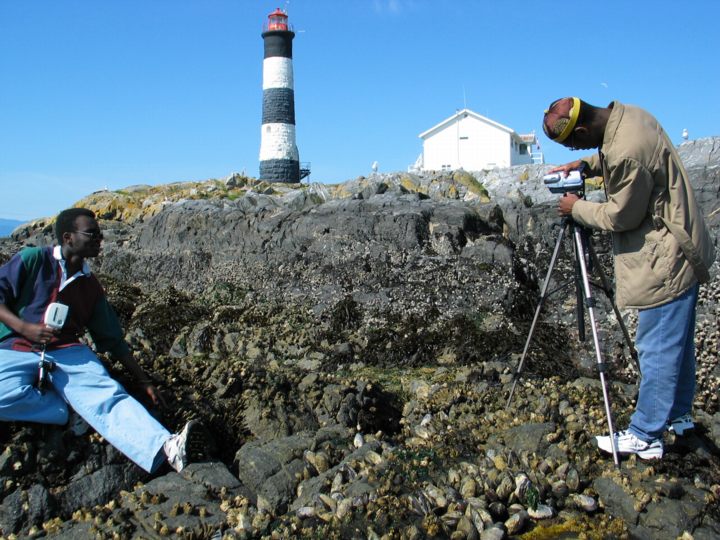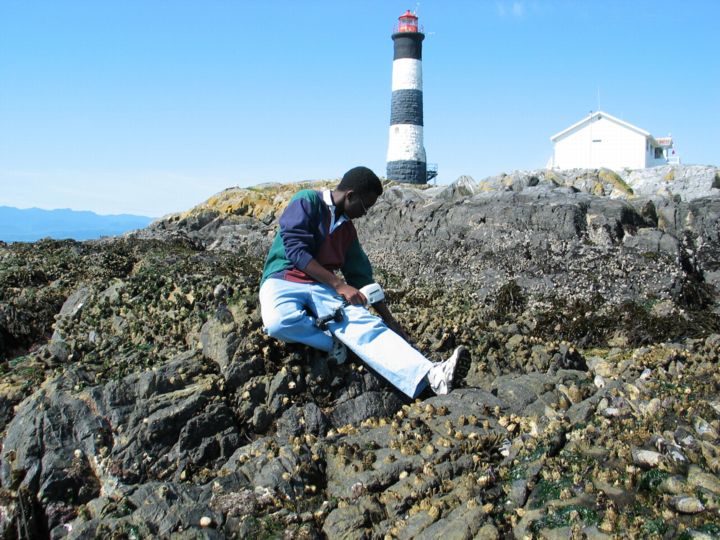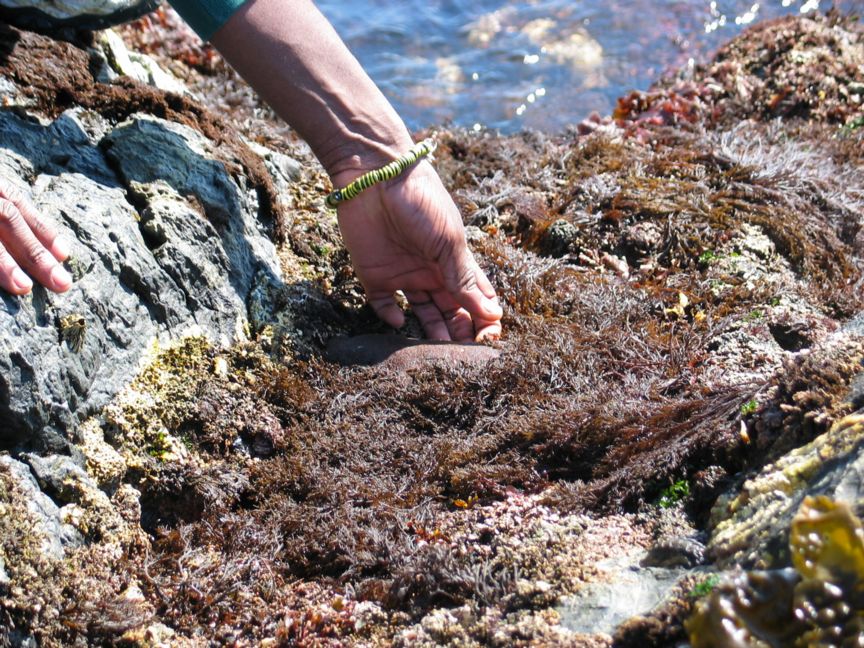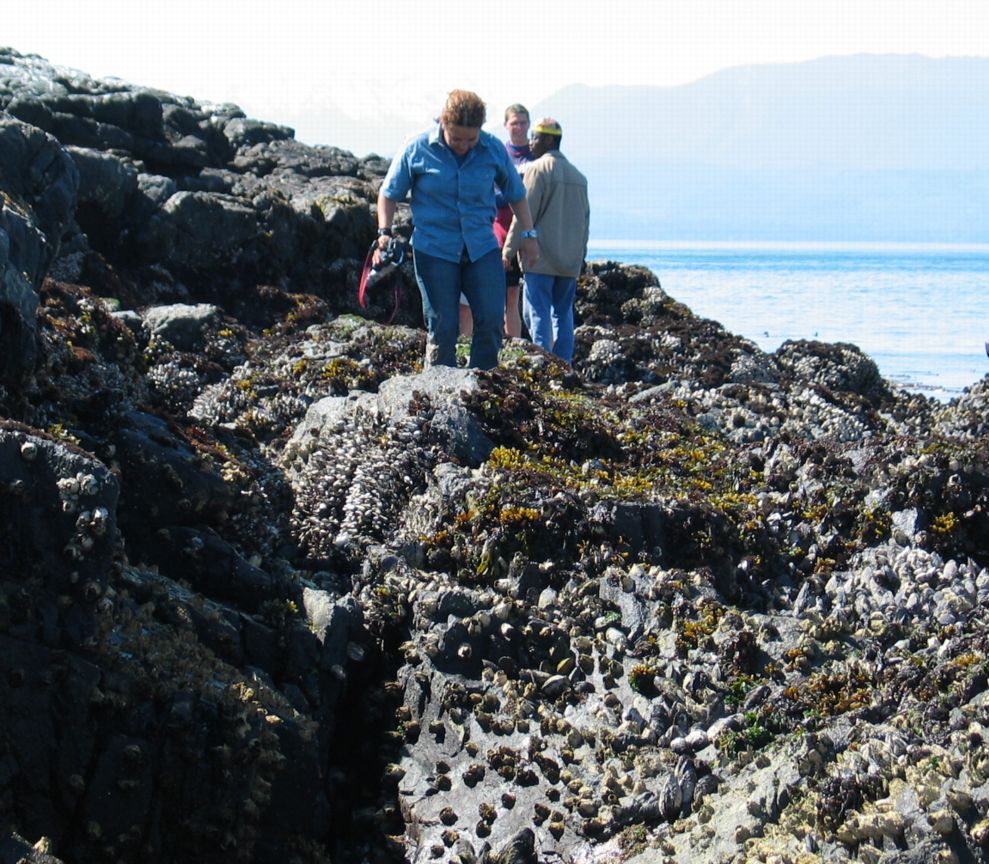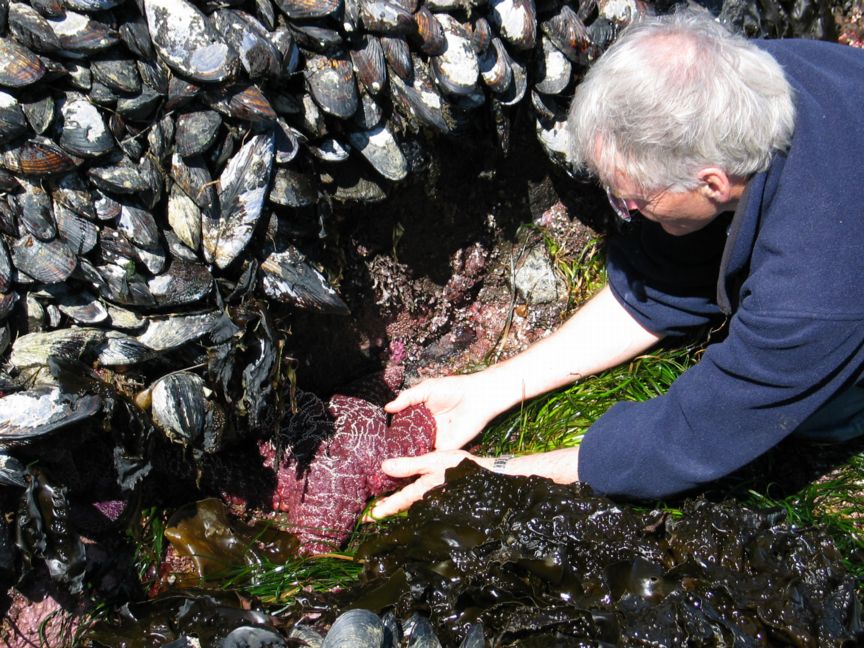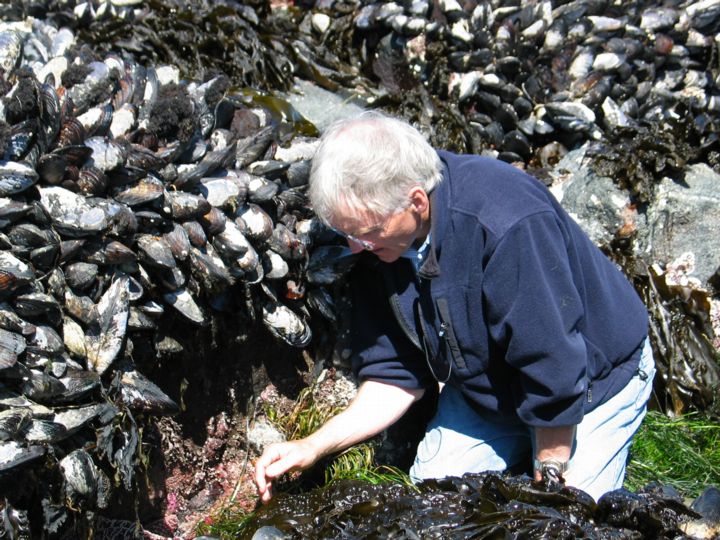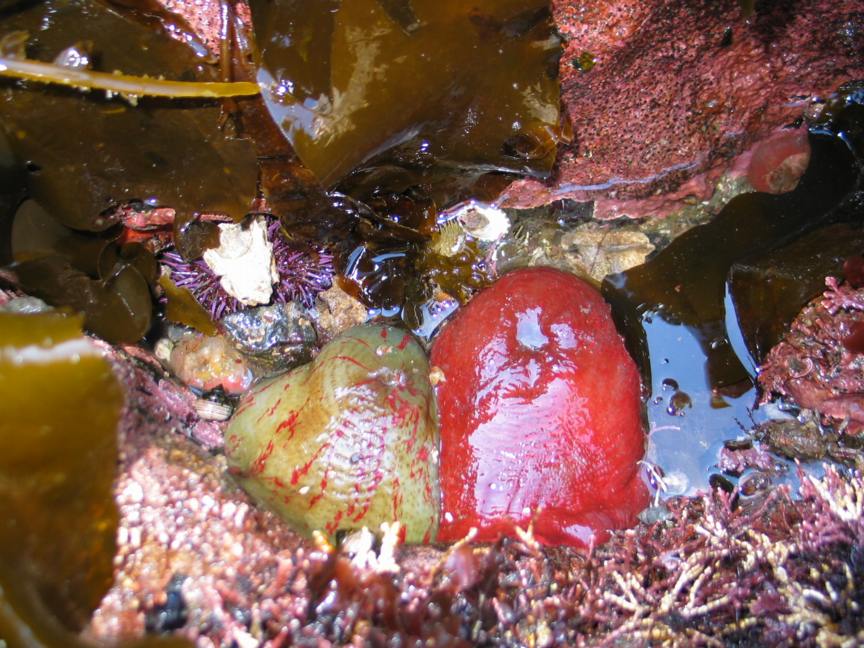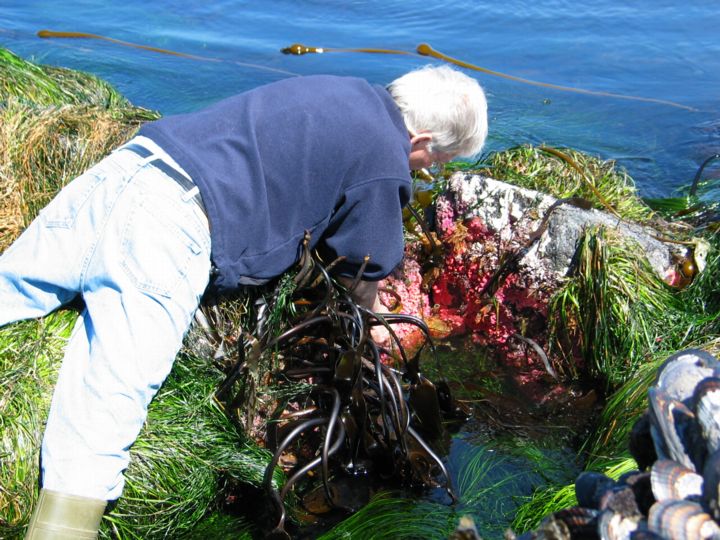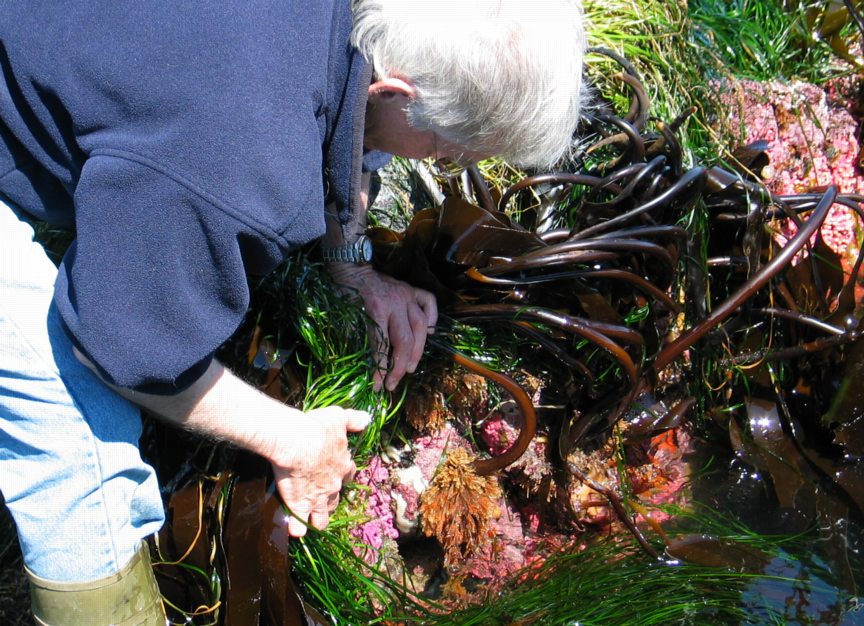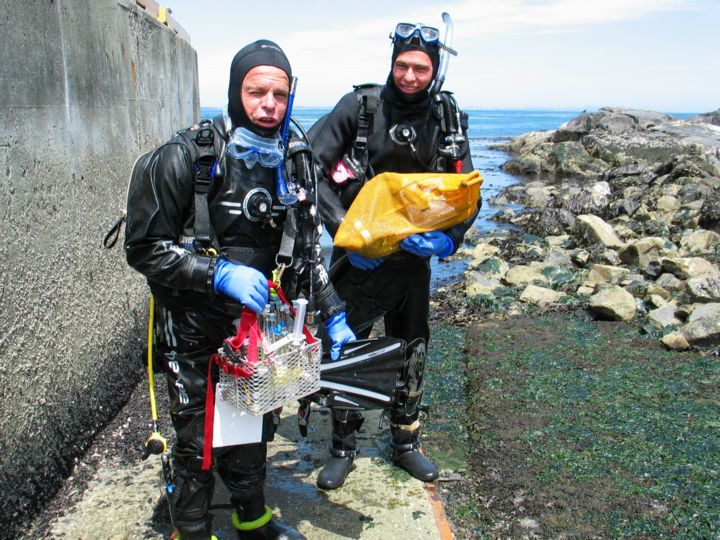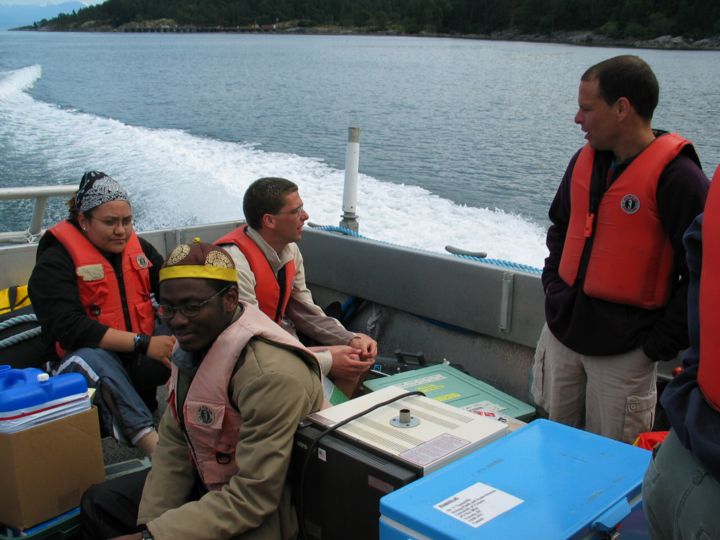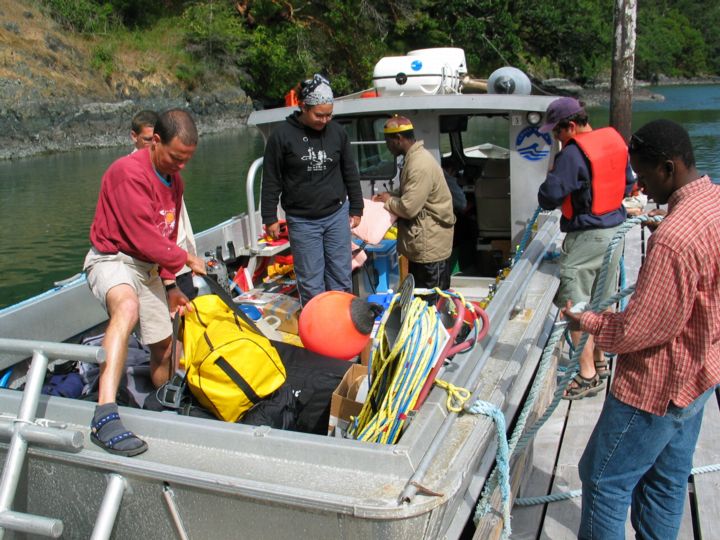n the first week of June 2004, four students and two researchers stayed at Race Rocks for an intensive week. Sponsorship for this week comes from the Johan Ashuvud memorial fund. Webcasts of the day’s events took place every night and on two days, school groups came out to help produce a program for live webcasting.
- Arriving at the island in “Second Nature”
- Paul, Emmanuel and Carmen
- Paul, Emmanuel and Carmen Emmanuel and Paul exploring and taking videos of the intertidal zone with the tower in the background.
- Setting up the camera in the intertidal zone. It is not an easy job getting good footage of the intertidal zone
- Emmanuel observing organisms in the intertidal zone zone hidden among the rocks
- A gumboot chiton in a bed of brown algae. Here we see Emmanuel trying to detach it from the rock to examine the ventral surface.
- Low tide exposure on the West shore. Michelle takes the opportunity of the low tide to work on her research project on goose neck barnacles
- This sea star, the purple or ochre star is common in other areas along the coastline, but this is the only specimen we have found here
- Garry in the mussel bed
- Tealia anemone exposed at the extreme low tide
- Tealia anemone exposed at the extreme low tide. Pink hydrocorals are exposed at low tide on the West shore
- exposed at low tide on the West shore. Hydroids exposed at an extreme low tide on the West shore.
- Gitai Yahel and Russel Wyeth stayed with the students for the week, sampling for his research on suspension feeders.
- Ride back to the college after completing the Johan Ashuvud project.
- Return to Pearson College at the end of the week.
(https://www.racerocks.ca/johan-ashuvud-project-at-race-rocks-2004/)
During the Johan Ashuvud project 2004, students explored the intertidal with Garry Fletcher. They examined various organisms as well as the artificial tidepool. In this video, we also get a chance to meet all the students taking part in the project.

